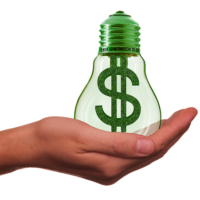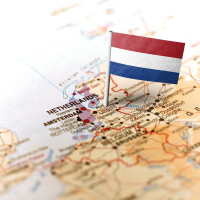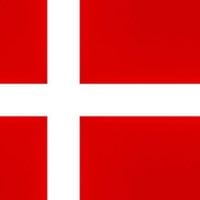The World Bank, established in 1944, is a vital international financial institution that aims to reduce poverty and promote sustainable economic development across the globe. Headquartered in Washington, D.C., it comprises two main institutions: the International Bank for Reconstruction and Development (IBRD) and the International Development Association (IDA). The World Bank provides financial and technical assistance to developing countries, enabling them to implement projects that foster economic growth, improve infrastructure, and enhance social services.
With a mission to eradicate extreme poverty and boost shared prosperity, the World Bank plays a crucial role in shaping global development policies and practices. Over the decades, the World Bank has evolved significantly, adapting its strategies to meet the changing needs of its member countries. It operates on the principle of collective action, bringing together governments, civil society, and the private sector to address complex development challenges.
The institution not only provides loans and grants but also offers expertise in areas such as education, health, agriculture, and environmental sustainability. By leveraging its extensive network and resources, the World Bank aims to create a more equitable world where all individuals have access to opportunities that can improve their quality of life.
Key Takeaways
- The World Bank is a global financial institution that provides funding and technical assistance to developing countries for development projects.
- Funding opportunities available through the World Bank include grants, loans, and guarantees for various sectors such as education, health, infrastructure, and agriculture.
- Eligibility criteria for global development projects include the country’s income level, project feasibility, and potential impact on poverty reduction and sustainable development.
- The application process for World Bank funding involves project identification, preparation, appraisal, and approval, with timelines varying depending on the type of funding.
- Case studies of successful projects showcase the impact of World Bank funding on improving infrastructure, reducing poverty, and promoting economic growth in developing countries.
Types of Funding Opportunities Available
Traditional Funding Options
Investment loans are typically used for specific projects that require substantial capital investment, such as infrastructure development or social programs. These loans are repaid over time, allowing countries to invest in long-term growth while managing their financial obligations. Development policy loans, on the other hand, provide budget support to governments implementing policy reforms aimed at improving economic stability and governance.
Innovative Financing Solutions
In addition to these traditional funding options, the World Bank also offers innovative financing solutions such as blended finance and results-based financing. Blended finance combines concessional funds with private sector investments to maximize the impact of development projects. This approach not only attracts additional resources but also encourages private sector participation in addressing global challenges.
Effective and Efficient Use of Funds
Results-based financing links disbursements to the achievement of specific outcomes, ensuring that funds are used effectively and efficiently. By diversifying its funding mechanisms, the World Bank enhances its ability to respond to the evolving needs of developing countries while promoting sustainable development.
Eligibility Criteria for Global Development Projects

Eligibility for World Bank funding is determined by a set of criteria designed to ensure that projects align with the institution’s mission and objectives. Generally, member countries must be classified as low or middle-income nations to qualify for financial assistance. The World Bank assesses each country’s economic situation, governance structures, and development priorities before approving funding requests.
Additionally, projects must demonstrate a clear potential for positive social and economic impact, addressing issues such as poverty alleviation, infrastructure improvement, or environmental sustainability. Moreover, the World Bank emphasizes the importance of stakeholder engagement and collaboration in project design and implementation. Eligible projects should involve local communities, government agencies, and civil society organizations to ensure that they are responsive to the needs of those they aim to benefit.
This participatory approach not only enhances project effectiveness but also fosters ownership among stakeholders, increasing the likelihood of long-term success. By establishing these eligibility criteria, the World Bank aims to support initiatives that are not only financially viable but also socially inclusive and environmentally sustainable.
Application Process and Timeline
The application process for securing funding from the World Bank can be intricate and requires careful planning and coordination among various stakeholders. Initially, countries interested in obtaining financial assistance must submit a project proposal outlining their objectives, expected outcomes, and implementation strategies. This proposal undergoes a rigorous review process by World Bank staff who assess its alignment with institutional priorities and eligibility criteria.
Feedback is provided to ensure that proposals meet the necessary standards before moving forward. Once a proposal is approved in principle, it enters a more detailed preparation phase where project design is refined based on stakeholder input and technical assessments. This phase may take several months to complete as it involves consultations with various parties, including government officials, local communities, and technical experts.
Following this preparation period, the project is presented to the World Bank’s Board of Executive Directors for final approval. The entire application process can span anywhere from six months to several years, depending on the complexity of the project and the level of stakeholder engagement required.
Case Studies of Successful Projects
Examining successful projects funded by the World Bank provides valuable insights into how targeted investments can lead to transformative change in developing countries. One notable example is the “National Rural Livelihoods Mission” in India, which aimed to reduce poverty by promoting self-employment and sustainable livelihoods among rural households. Through a combination of skill development programs, access to credit, and support for self-help groups, this initiative empowered millions of individuals to improve their economic circumstances.
The project not only enhanced income levels but also fostered social cohesion within communities. Another exemplary case is the “Ethiopia Productive Safety Net Program,” which was designed to address food insecurity and support vulnerable populations in rural areas. By providing cash transfers and food assistance during lean seasons, this program helped families build resilience against shocks while investing in community assets such as roads and schools.
The success of this initiative has been attributed to its focus on community participation and capacity building, demonstrating how targeted interventions can yield significant improvements in food security and overall well-being.
Future Outlook and Potential Impact

Addressing Global Challenges
The World Bank is facing numerous challenges and opportunities as it strives to fulfill its mission in an increasingly complex global landscape. Climate change, geopolitical tensions, and economic disparities pose significant hurdles to sustainable development efforts. However, the institution is committed to adapting its strategies to address these pressing issues while continuing to support member countries in their development journeys.
Embracing Green Financing and Technological Advancements
The emphasis on green financing and climate resilience is expected to play a pivotal role in shaping future projects as nations strive to mitigate environmental impacts while fostering economic growth. Moreover, technological advancements present new avenues for innovation in development financing. The World Bank is exploring digital solutions that can enhance project delivery and monitoring while increasing transparency and accountability.
Leveraging Data Analytics and Digital Platforms
By leveraging data analytics and digital platforms, the institution aims to improve decision-making processes and ensure that resources are allocated effectively. This approach will enable the World Bank to optimize its operations and maximize the impact of its projects.
A Commitment to Shared Prosperity
As it navigates these evolving dynamics, the World Bank remains dedicated to its core mission of reducing poverty and promoting shared prosperity worldwide, with a focus on creating lasting positive impacts for future generations.
For organizations seeking funding opportunities similar to those offered by The World Bank for global development projects, the International Youth Day 2024: Must-Apply Opportunities for Your Projects this August article could be highly relevant. This resource provides a comprehensive list of funding opportunities specifically tailored for projects that empower and engage youth around the world. These opportunities are crucial for organizations aiming to implement initiatives that support youth development, education, and participation in societal progress, aligning well with the broader goals of global development and sustainability.
FAQs
What is the World Bank?
The World Bank is an international financial institution that provides loans and grants to the governments of low and middle-income countries for the purpose of pursuing capital projects.
What are the funding opportunities offered by the World Bank?
The World Bank offers funding opportunities for global development projects in various sectors such as education, health, infrastructure, agriculture, and environmental sustainability.
Who is eligible to apply for funding from the World Bank?
Governments of low and middle-income countries, as well as eligible organizations and entities within those countries, are eligible to apply for funding from the World Bank.
How can organizations and governments apply for funding from the World Bank?
Interested organizations and governments can apply for funding from the World Bank by submitting project proposals through the World Bank’s official website or through their local World Bank office.
What are the criteria for receiving funding from the World Bank?
The World Bank evaluates project proposals based on various criteria including the potential impact on development outcomes, the sustainability of the project, the capacity of the implementing organization, and the alignment with the World Bank’s strategic priorities.
What types of projects does the World Bank typically fund?
The World Bank funds a wide range of projects including infrastructure development, poverty reduction programs, education and healthcare initiatives, environmental conservation efforts, and economic development projects.
Are there any specific focus areas for funding from the World Bank?
The World Bank has specific focus areas for funding including climate change mitigation and adaptation, gender equality and women’s empowerment, and promoting good governance and institutions.








































